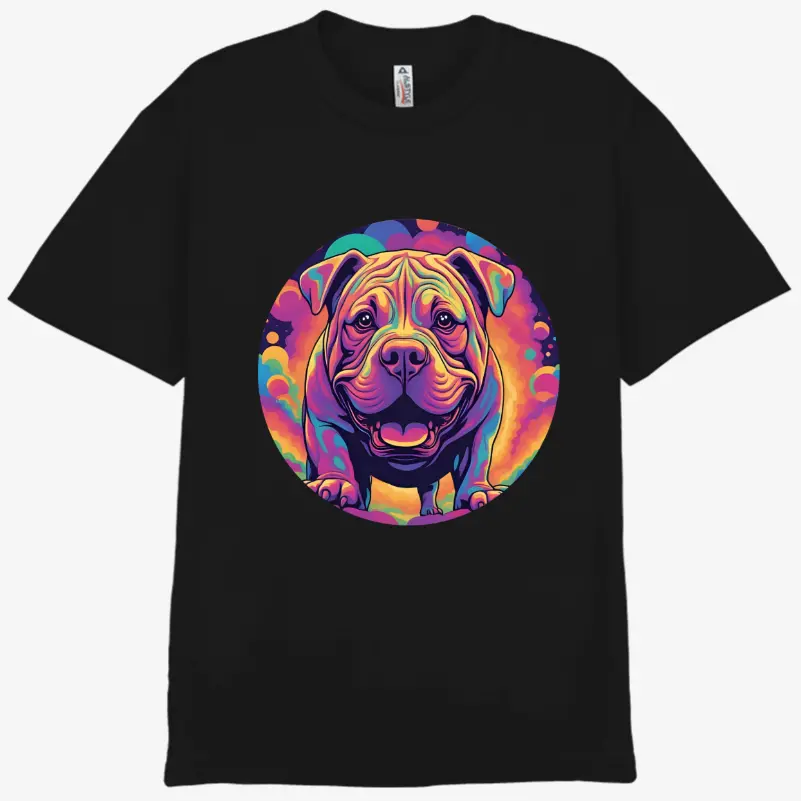Shar Pei Dog Special Care is essential because this breed faces unique health challenges such as skin folds, eye conditions, and joint issues. Regular vet visits, proper grooming, and preventive care are crucial to maintaining their well-being. This guide reveals why Shar Pei require more attention than many other breeds.
DoggyZine.com
Shar Pei dogs rank among the world’s most distinctive canine breeds, and they nearly went extinct. The Guinness Book of Records declared them the world’s rarest breed in 1978, with only 60 left. My experience treating these wrinkly companions as a veterinarian has taught me their uniqueness goes far beyond their looks.
These charming Chinese dogs typically live just 8-12 years, substantially shorter than other breeds. Their trademark wrinkled skin creates various health complications. The breed’s specific challenges include Shar Pei fever that can lead faster to kidney failure. They also tend to develop allergies, eye problems, and knee issues. Your Shar Pei’s special care requirements aren’t just helpful to know—they’re crucial for their health and happiness.
This piece offers my professional explanation about caring for your Shar Pei’s distinctive skin folds and common health concerns. New owners and experienced Shar Pei parents will find practical advice to help their wrinkly companion live their best life.
Table of Contents
Understanding the Shar Pei’s Unique Traits
A Chinese Shar Pei’s unique looks will catch your eye right away. The name “Shar Pei” means “sand skin” in Mandarin – a perfect description of their rough, bristly coat that feels like sandpaper. These ancient dogs stand out from all other breeds thanks to their unique physical traits.
Why are Shar Peis so wrinkly?
Those famous wrinkles do more than just look cute. The original breeders created these dogs to hunt, fight, and guard. Their loose skin lets them twist around if another dog grabs or bites them. Just think over how a mouthful of prickly skin folds would discourage any attacker during a fight.
Shar Pei puppies actually have more wrinkles than adult dogs. These distinctive folds settle mainly around the head, neck, and shoulders as they grow up. That’s why puppies look more wrinkled than grown dogs.
Breeding practices changed as time went on. We focused on creating more wrinkled “meatmouth” Shar Peis because people just needed dogs that kept their skin folds as adults. This choice boosted the breed’s unique look but brought some health issues too.
The role of genetics in their appearance
Science explains those lovable wrinkles through genetics. Researchers found Shar Peis have a mutation in their hyaluronic acid synthase 2 (HAS2) gene. This gene creates an enzyme that blends hyaluronan, a key skin component.
The genetic mutation makes Shar Peis produce too much HAS2 in their dermal fibroblasts. This leads to extra hyaluronan throughout their skin. Scientists call it “hyaluronanosis” – a condition where too much hyaluronan creates thick skin folds, especially around the head and joints.
DNA research showed something fascinating about Shar Peis. They’re the only dogs with a duplicated DNA segment near the HAS2 gene, sometimes copied multiple times. More copies mean more HAS2 expression, which creates more hyaluronan and wrinkles.
“Meatmouth” Shar Peis have two to five times more hyaluronan in their blood than other dogs. This finding explains their special look and links to certain breed-specific health issues.
Temperament and behavior overview
These wrinkled dogs have complex personalities shaped over centuries. Shar Peis blend intelligence, independence, and deep loyalty to their families. Their original guard dog roots give them sharp instincts that make them great watchdogs.
Their personality mixes seemingly opposite traits:
- They stay calm and dignified but can play enthusiastically with family
- They love their people but remain cautious with strangers
- They think for themselves yet bond deeply with their humans
These dogs need early socialization. Without good training and exposure to different situations as puppies, they might develop behavior problems from their natural wariness. You’ll need to guide their protective instincts through steady training.
Male Shar Peis show substantially higher aggression rates (7.97%) compared to females (2.36%). Future owners should think over these gender differences in temperament.
Families looking to adopt a Shar Pei should know these dogs work best with older kids and experienced dog owners who understand their special needs. Their independent spirit needs patient, consistent training instead of harsh methods.
Common Shar Pei Health Issues to Watch For

Chinese Shar Pei dogs need more than just basic care to stay healthy. Their unique physical features make them lovable but also put them at risk for several health conditions that can affect their quality of life.
Shar Pei Fever and its symptoms
Shar Pei Fever (SPF), also called Familial Shar Pei Fever or Swollen Hock Syndrome, affects about 23% of these dogs. Dogs with this inherited condition get repeated bouts of high fever between 103°F and 107°F that last 12-36 hours.
The most worrying symptoms include:
- Swollen, painful hocks (ankle joints)
- Lethargy and reluctance to move
- Decreased appetite
- Abdominal pain
- Occasional vomiting and diarrhea
This condition becomes even more serious because it links to amyloidosis. The protein amyloid builds up in organs over time, especially in the kidneys and liver, which can lead to organ failure. Dogs with more skin folds face higher risks because the same genetic mutation causes both their wrinkles and this condition.
Shar Pei eye issues: Entropion and Glaucoma
Entropion tops the list of health problems in Chinese Shar Pei dogs, with almost one in five (17.9%) affected each year. Their abundant facial wrinkles make this painful condition worse as eyelashes constantly rub against the cornea every time they blink.
Dogs can go blind if entropion isn’t treated, after developing corneal ulcers and scars. Watch for signs like excessive tearing, squinting, redness, and cloudy eyes. Quick surgery can prevent lasting damage.
Glaucoma poses another serious threat by increasing pressure inside the eyeball. Dogs with glaucoma often squint and have watery eyes, bluish corneas, and redness. This condition needs immediate medical attention since high pressure can cause blindness within 4-24 hours.
Skin infections and allergies
The breed’s signature skin folds create perfect spots for bacteria and yeast to grow. These areas trap moisture and lead to skin fold dermatitis, causing redness, irritation, and a distinct smell.
Shar Peis often develop atopic dermatitis (allergies) that targets their ears, folds, belly, and feet. These allergies usually start between ages one and three and get worse each year without treatment. Regular cleaning and checking of skin folds helps prevent infections.
Ear infections hit Shar Peis hard, making them the second most common health issue. About 16.4% get infections yearly—more than twice the rate (7.3%) of other breeds. Their narrow ear canals, caused by thick, folded skin, make them more vulnerable.
Joint and bone problems
These dogs get patellar luxation (dislocating kneecap) more often than many other breeds. You’ll notice affected dogs suddenly skip or hop while running, then kick their leg sideways to fix their kneecap.
Hip and elbow dysplasia also plague these dogs and lead to painful arthritis as they age. Dogs struggle to get up, show lameness, and appear stiff. Early X-rays help catch these issues so you can start treatment with medicine, weight control, or surgery if needed.
A special type of arthritis hits Shar Peis during fever episodes. This inflammation brings recurring fevers and swollen joints, especially in the hocks, because their immune system malfunctions.
Digestive and immune-related conditions
Many Shar Peis battle Inflammatory Bowel Disease (IBD), which causes ongoing vomiting or diarrhea. This immune disorder thickens the stomach and intestinal lining with excess immune cells, which disrupts nutrient absorption.
Research shows Shar Peis with low vitamin B12 have much lower serum albumin levels (median: 2.5 g/dl) than those with normal B12 (median: 2.9 g/dl). Dogs with this deficiency need lifelong dietary management and medication.
Your Shar Pei can still live comfortably despite these health challenges with proper vet care, regular checkups, and preventive measures. Dogs with recurring fevers need regular kidney function tests. Knowing these breed-specific issues helps you get quick treatment when problems first show up.
Shar Pei Skin and Wrinkle Care Essentials

The Chinese Shar Pei’s iconic wrinkles make them easy to spot, but these distinctive folds need regular care to keep their skin healthy. My years of treating Shar Pei patients have taught me that proper fold maintenance isn’t just about looks—it’s crucial to prevent serious skin infections.
How to clean Shar Pei skin folds
Your Shar Pei’s deep skin folds create warm, moist spots where bacteria and yeast love to grow, which makes daily cleaning essential. The breed’s bristle-like hairs can actually irritate the skin within these folds. Here’s what works best:
- Clean each wrinkle daily or at least every other day using:
- A soft, damp cloth or cotton ball
- Hypoallergenic baby wipes (alcohol-free)
- Vet-approved cleaning solutions containing chlorhexidine
Drying each fold is just as important as cleaning it. Moisture that gets trapped often leads to skin fold dermatitis, which this breed commonly faces. A soft, dry cloth or cotton balls work great to absorb all moisture between the folds.
Your dog’s facial wrinkles need extra attention, especially around the muzzle. These deeper folds tend to collect food particles and tears, creating the perfect environment for bacteria. The face and muzzle’s more prominent folds make them really prone to irritation.
Preventing skin fold dermatitis
Skin fold dermatitis happens because Shar Peis have thick, folded skin that rubs against itself, plus natural secretions build up. Most owners first notice an unpleasant smell since the irritated skin stays hidden in the folds.
To prevent problems:
Check your dog’s skin twice weekly. Watch for signs of infection like redness, swelling, crusty patches, darkened skin, or unusual smells. Catching issues early lets you act before minor irritation turns into something worse.
Keep your Shar Pei at a healthy weight. Extra pounds make folds deeper and raise infection risk. Managing any allergies helps too, since they often make skin issues worse in this breed.
Keeping folds dry is key, but don’t overdo it. Really dry skin can develop tiny cracks where bacteria and fungi get in. After cleaning, try using a light, vet-approved moisturizing oil with omega-3 fatty acids to keep the skin barrier working well.
Recommended grooming routines
Healthy Shar Peis naturally stay pretty clean with minimal smell, so they need fewer baths than other breeds. Bathing every three weeks works fine unless your dog gets really dirty.
Between baths, you should:
- Clean and dry wrinkles daily as mentioned above
- Clean ears weekly with a veterinary solution that has a drying agent
- Brush teeth three times weekly at minimum
- Trim nails monthly and watch for toe infections
Pick a hypoallergenic, fragrance-free shampoo made for sensitive skin. Medicated shampoos with oatmeal, aloe vera, or other soothing ingredients work great for Shar Peis. Rinse twice after bathing to get rid of all shampoo residue that might cause irritation.
Regular vet check-ups are vital since Shar Peis tend to have skin issues. Your vet can customize recommendations based on your dog’s skin needs and might suggest prescription products if problems keep coming back.
These care practices will help your wrinkly friend avoid uncomfortable skin infections while keeping their unique look. Soon enough, these steps will feel natural—just another part of the special care that makes life with a Chinese Shar Pei so rewarding.
Feeding and Nutrition for a Healthy Shar Pei
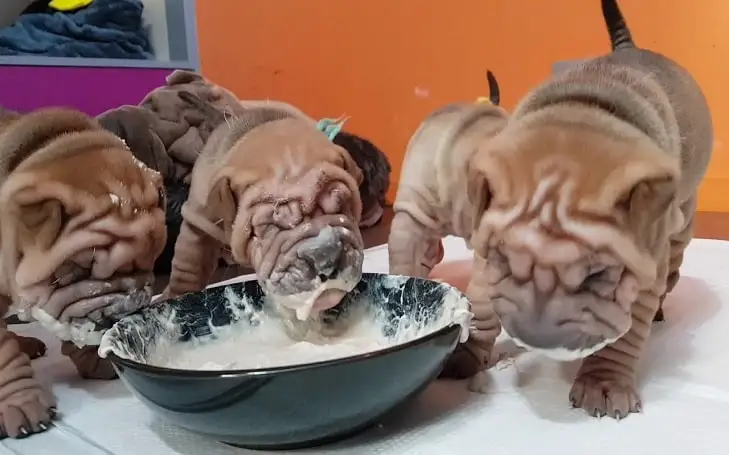
Quality nutrition builds the foundation of health for any Chinese Shar Pei dog. These dogs need protection against many breed-specific issues we’ve discussed. Shar Peis need a carefully tailored nutritional approach that supports their skin, joints, and immune system because of their unique health challenges.
Choosing the right food for Chinese Shar Pei dogs
Food quality makes a huge difference for your Shar Pei. These dogs often develop allergies and skin issues, so they need foods with:
- Named protein sources as the first ingredient (chicken, beef, turkey)
- Clearly identified fat sources like chicken fat that digest better
- No meat by-products or low-quality fillers
- Minimal potential allergens such as wheat or soy
Shar Pei puppies need a medium-breed, high-quality puppy formula rich in calories during their first 12 months. Your puppy should transition gradually to an adult medium-breed formula after turning one year old.
Your dog’s life stage determines their nutritional needs. Senior diet with joint support ingredients becomes appropriate around 7 years of age. The Association of American Feed Control Officials (AAFCO) standards must be met by all food choices.
Dogs with recurring skin issues might benefit from hypoallergenic diets or those with novel protein sources like duck or venison. Foods with balanced omega fatty acids help curb inflammation and support your dog’s characteristic skin throughout their life.
Supplements for skin and joint health
Some supplements can provide extra support beyond regular nutrition because Shar Peis often face skin problems and joint issues.
This breed responds well to omega-3 fatty acid supplements. These nutrients strengthen the skin barrier, prevent dandruff, and reduce secondary skin infections. EPA and DHA from fish oil and algae oil offer highly bioavailable forms of omega-3.
Joint health supplements that work well include:
- Glucosamine and chondroitin that maintain cartilage
- Type II collagen for joint structure and mobility
- MSM (methylsulfonylmethane) that supports connective tissue
- Turmeric with natural anti-inflammatory properties
These supplements work together to reduce inflammation and support mobility. This becomes vital as Shar Peis age and face more joint problems.
Feeding schedule and portion control
Regular feeding routines prevent digestive issues in Shar Pei dogs. Adult Shar Peis should eat twice daily—morning and evening meals help maintain steady energy levels and lower the risk of bloat.
Weight control matters because Shar Peis gain weight easily, which makes their joint issues worse. Food packaging guidelines provide a starting point, but your vet’s recommendations should guide the final amounts. Dog food should make up 90% of their diet, with treats limited to 10% of daily calories.
Slow feeder bowls help dogs that eat too quickly. Better nutrient absorption and fewer digestive issues result from slower eating.
Regular weight checks help you adjust portions as needed. Weight gains or losses signal the need to reassess food intake. Senior Shar Peis become less active and need fewer calories to stay healthy.
Set feeding times and consistent amounts create structure and help your Shar Pei’s digestion work better. High-quality nutrition that meets their specific needs will support your wrinkly companion’s health and comfort for years to come.
Training and Socialization Tips
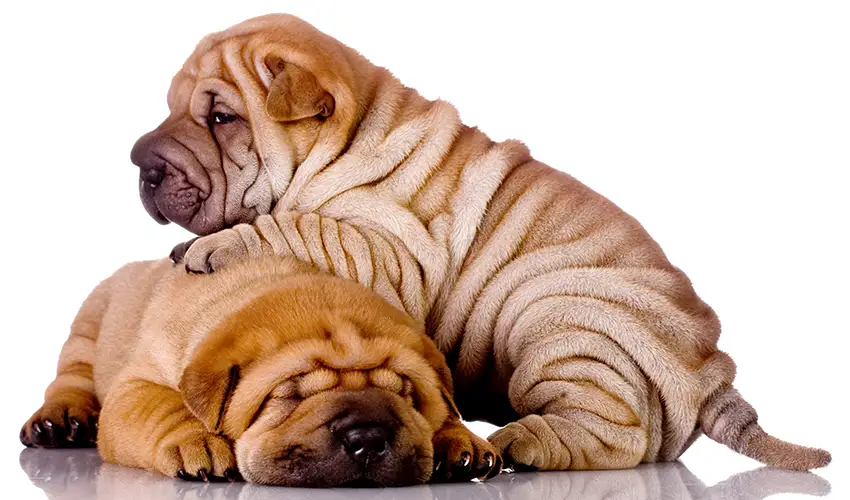
Chinese Shar Peis come with unique training challenges due to their distinct temperament. Their background as guard dogs shapes their personality, which needs careful handling right from the start.
Why early socialization is critical
Your Shar Pei puppy’s most vital socialization window falls between 7-16 weeks. This time shapes their future behavior through exposure to different experiences. Poor socialization can result in anxiety and behavioral issues that become harder to fix as your dog grows older.
Waiting too long to socialize your Shar Pei can stunt their emotional growth. Their guard dog instincts might turn into problematic distrust or aggression toward strangers without early guidance. Dog trainers strongly suggest putting your Shar Pei puppy in structured obedience classes alongside your home training efforts.
Dealing with stubborn behavior
People often call Shar Peis stubborn and hard to train because they don’t respond well to dominance-based methods. These intelligent dogs need patience and consistency rather than harsh training. Trying to force them usually backfires.
Your Shar Pei training works best when you:
- Run short, fun sessions to keep interest high
- Give treats and praise as positive reinforcement
- Stay firm but patient when boundaries get tested
- Switch unwanted behaviors to good ones
- Make sure all family members follow the same rules
Your Shar Pei’s stubbornness comes from intelligence, not defiance. This mindset helps you see training as teamwork rather than a battle of wills. These smart dogs learn fast once they see a good reason to cooperate.
Shar Pei as a family dog
Well-trained and socialized Shar Peis turn into devoted family protectors. They build deep bonds with their people and show amazing loyalty to their inner circle. Their protective instincts need proper guidance through steady training.
Families with kids should always supervise interactions. Shar Peis prefer older children who respect boundaries and don’t like rough handling or sudden moves. Teaching kids how to interact with dogs matters just as much as training the Shar Pei.
Other pets can work out with slow, early introductions, but experts say Shar Peis often do better as solo pets. Their territorial side might cause friction with other animals unless they get extensive socialization early on.
It’s worth mentioning that bringing a Shar Pei into your family takes good preparation. Set clear rules from day one to stop this naturally dominant breed from taking charge of your household.
Vet Visits and Preventive Care
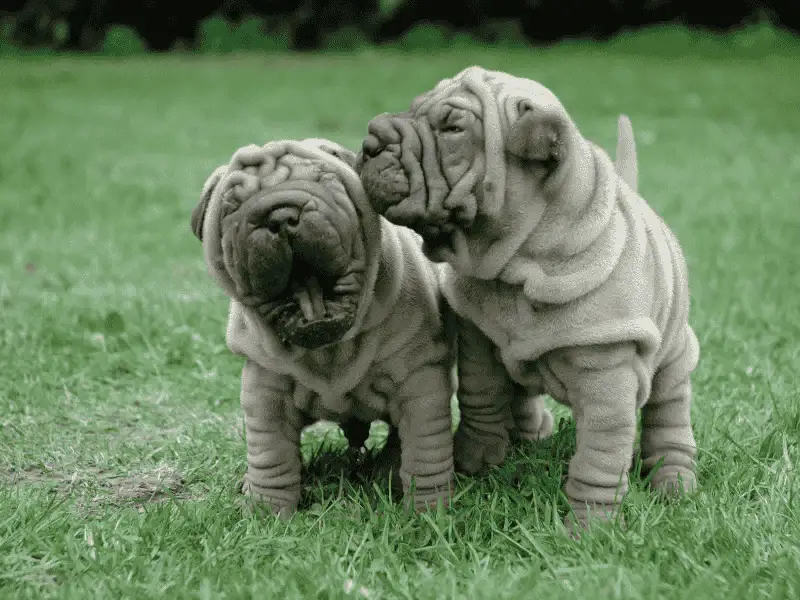
Regular vet care is the life-blood of your Shar Pei’s health plan. These wrinkly companions need special care because they are prone to specific health conditions.
Vaccination and parasite control
Your Shar Pei needs core vaccines that include distemper, adenovirus, parvovirus, and rabies. Your vet might suggest more vaccines based on your dog’s lifestyle and local health risks. Year-round parasite prevention is vital, and we focused on heartworms, ticks, fleas, hookworms, roundworms, and whipworms.
Routine health screenings
Annual check-ups help catch health issues early. Your vet might recommend these tests due to the breed’s genetic makeup:
- Blood work to monitor organ function
- Screening for hip dysplasia
- Dental examinations since Shar Peis often develop dental problems
Many vets offer health care plans to spread costs throughout the year.
Emergency vet visits
Get medical help right away if you notice:
- Head scratching/shaking with ear discharge
- Difficulty urinating or unusual urine color
- Eye problems (cloudiness, redness)
- Dry heaving or stomach pain
- No interest in playing or exercise
- Undigested food in vomit
- Dry, scaly skin on face/paws
- Trouble breathing
- Stiff joints or limited movement
These signs could point to serious health issues that need quick treatment.
Conclusion
A Chinese Shar Pei needs more dedication than your average dog. This piece explores the unique challenges these wrinkly companions face because of their genetic makeup. Their trademark folds look endearing but just need daily cleaning to prevent painful skin infections. These dogs are prone to Shar Pei Fever, eye conditions, and joint problems that require careful monitoring and quick action.
The joy of having a Shar Pei is nowhere near the challenges they bring. Their loyalty, intelligence, and unique looks make them special companions. My veterinary experience shows that owners who stick to proper skin care routines, balanced nutrition, and early socialization have healthier dogs with fewer issues.
Note that your Shar Pei’s health depends more on prevention than treatment. Regular vet visits help catch problems early before they become serious. A consistent cleaning routine for those distinctive wrinkles becomes natural over time and strengthens your bond with your dog.
New Shar Pei owners might find the initial period challenging. All the same, the special care these dogs need deepens your connection with your wrinkly friend. Each fold-cleaning session and health check shows your dedication to their wellbeing.
Without doubt, Shar Peis can live happy, comfortable lives despite their breed-specific challenges. Your attention to their unique needs – from diet choices to training methods – shapes their quality of life. These dogs might not live as long as other breeds, but your time together will be full of joy, companionship, and those adorable wrinkled expressions that make this ancient breed loved worldwide.
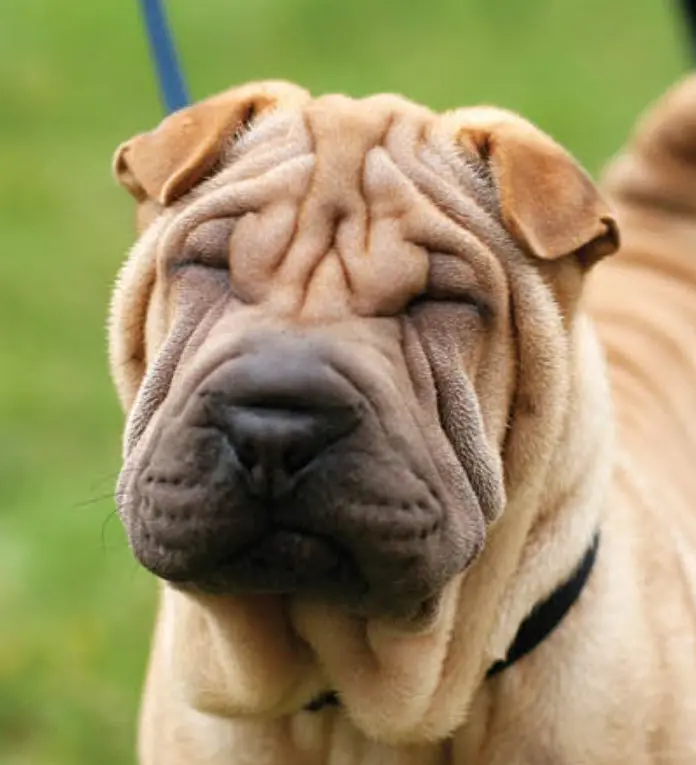
FAQs
Why do Shar Pei dogs need special care?
Shar Pei dogs need special care due to skin folds, eye problems, and hereditary issues. Focused grooming and vet visits prevent serious health risks.
What are the most common Shar Pei health problems?
The most common Shar Pei health problems include skin infections, entropion (eye condition), hip dysplasia, and ear infections. Special care helps manage them.
How should I groom a Shar Pei properly?
Grooming a Shar Pei requires cleaning skin folds, regular bathing, and monitoring for infections. Special care keeps their skin and coat healthy long-term.
How often should a Shar Pei visit the vet?
A Shar Pei should visit the vet at least twice a year. Regular checkups catch skin, eye, and joint issues early, ensuring proper special care.
What diet is best for a Shar Pei?
The best diet for a Shar Pei is a high-quality, balanced formula that supports skin and joint health. Special care also includes avoiding allergy-triggering foods.
